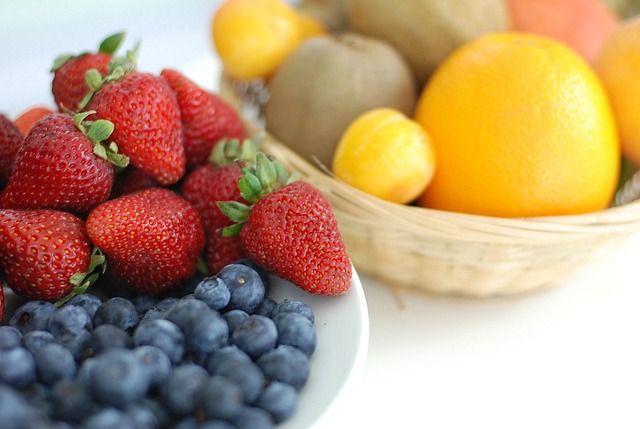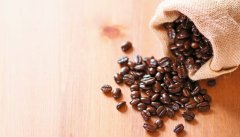Description of flavor and aroma of Ethiopian tanning hole plus Yega Xuefei G1 Agxi small farmer coffee

For professional baristas, please follow the coffee workshop (Wechat official account cafe_style)
Ethiopia Natural Yirgacheffe Konga Abeyot Ageze G1
These are the beans imported by the raw bean merchant P in the first half of 2016. Because it is a micro-batch of small farmers, it will soon be out of stock in the second half of the year. According to raw bean merchants, the beans are produced from Abeyot Ageze's microprocessing plant in Conga, and the yield is reduced during the sun exposure to avoid uneven exposure or overfermentation caused by excessive stacks. In addition, the treatment field padded a layer of straw mat on the sun scaffolding to increase the ventilation in the fermentation process, and continue to turn, so that the exposure and fermentation of raw beans can be more uniform and complete.
In terms of raw bean cup test, according to the flavor description of raw bean merchants, it is mainly a strong blueberry flavor, with some milky aroma, with sour taste of citrus fruit and sweet aroma of tropical fruit, which can be felt as fermented as wine in the end. These are the classic flavors of sun-tanned Yega Chuefei.
Image
Before I put it into the pot, I took a 100g sample to observe the condition of the beans. Usually in the sun, raw beans have a strong sour aroma similar to pickled carambola. But this one is not strong and should be caused by shortening the fermentation time in the treatment field.
Image-1
Pick out defective beans from 100g.
There are almost no black or worm-eaten beans, and the main problems are chopped or immature beans.
Image-2
7% of the defective beans were picked out in 100g. In the case of sun-dried beans, it is an acceptable range. (due to the re-regulation of the grading of raw beans by ECX in 2015, the old version of grading based on the number of defects is no longer suitable for sun-dried beans.)
Since the water content is about 10% visually, the input temperature of 500g is 160 degrees, and the temperature recovery point is about 84 degrees. Since the particle size of beans is fairly uniform, the state of dehydration is easier to grasp. Mo enters an explosion at about 196 degrees, while I choose beans at an explosion density of 208 degrees.
After 24 hours of rest, the aromas of blueberries and other red berries are obvious after grinding, with the sweetness of boiled brown sugar. Brewed in powdered water at 93 degrees 1:14, the coffee is wet with the sweetness of comprehensive berry jam, refreshing fruit juice at the back and front of the entrance, and a burst of citrus in the middle, similar to lime acidity, with a sweet finish of berry cream mixed with some schrum.
On the whole, the overall performance of this coffee in the sun Yega can be regarded as the performance of the upper-middle class. Especially in terms of cleanliness, the consistency of flavor and the sense of balance are very outstanding. If the texture and fineness of the oil can be further strengthened, the overall flavor will be more perfect.
Important Notice :
前街咖啡 FrontStreet Coffee has moved to new addredd:
FrontStreet Coffee Address: 315,Donghua East Road,GuangZhou
Tel:020 38364473
- Prev

Description of coffee flavor and taste in Galapagos Islands, Ecuador
Professional baristas please pay attention to the coffee workshop (Wechat official account cafe_style) Ecuador Galapagos Islands Ecuador is not a major coffee producing country, although located in the coffee belt, but the geographical environment is more suitable for cocoa cultivation. Therefore, Ecuador's beans are not common. Usually, the coffee items that can still survive in this kind of country are trump cards, such as teeth.
- Next

Still looking for bulletproof coffee? How about drinking coffee like this to speed up fat burning!
Professional barista communication, please pay attention to coffee workshop (Weixin Official Accounts cafe_style) In fact, a lot of food is not what you think. Foreign studies have found that some bad foods are not so bad, but a lot of good foods have hidden traps to crack the stereotypes of bad foods, and provide correct practices and eating methods, so that these foods can play a health effect of one plus one greater than two. Taiwan per person per year
Related
- Detailed explanation of Jadeite planting Land in Panamanian Jadeite Manor introduction to the grading system of Jadeite competitive bidding, Red bid, Green bid and Rose Summer
- Story of Coffee planting in Brenka region of Costa Rica Stonehenge Manor anaerobic heavy honey treatment of flavor mouth
- What's on the barrel of Blue Mountain Coffee beans?
- Can American coffee also pull flowers? How to use hot American style to pull out a good-looking pattern?
- Can you make a cold extract with coffee beans? What is the right proportion for cold-extracted coffee formula?
- Indonesian PWN Gold Mandrine Coffee Origin Features Flavor How to Chong? Mandolin coffee is American.
- A brief introduction to the flavor characteristics of Brazilian yellow bourbon coffee beans
- What is the effect of different water quality on the flavor of cold-extracted coffee? What kind of water is best for brewing coffee?
- Why do you think of Rose Summer whenever you mention Panamanian coffee?
- Introduction to the characteristics of authentic blue mountain coffee bean producing areas? What is the CIB Coffee Authority in Jamaica?

